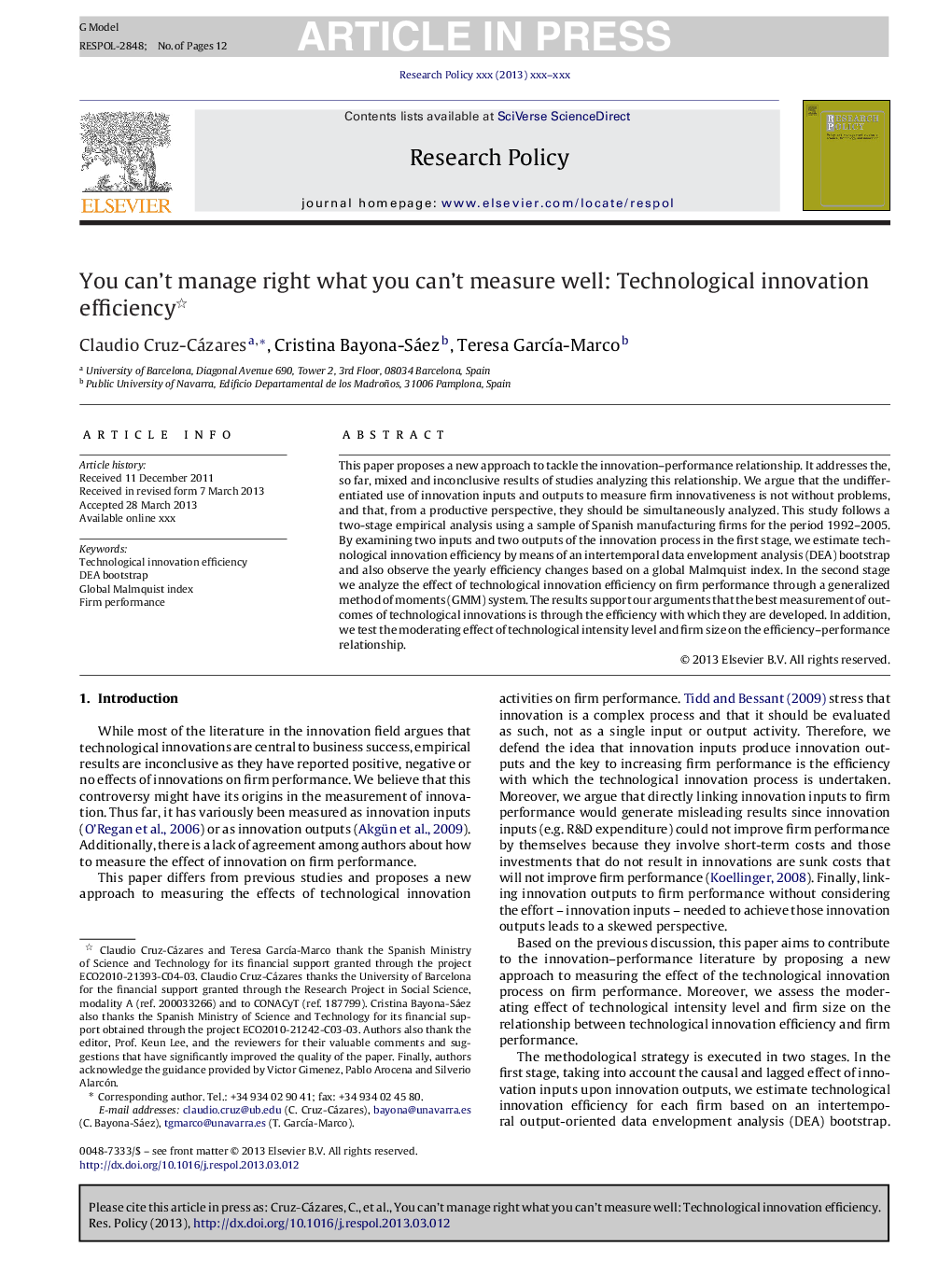| Article ID | Journal | Published Year | Pages | File Type |
|---|---|---|---|---|
| 7384660 | Research Policy | 2013 | 12 Pages |
Abstract
This paper proposes a new approach to tackle the innovation–performance relationship. It addresses the, so far, mixed and inconclusive results of studies analyzing this relationship. We argue that the undifferentiated use of innovation inputs and outputs to measure firm innovativeness is not without problems, and that, from a productive perspective, they should be simultaneously analyzed. This study follows a two-stage empirical analysis using a sample of Spanish manufacturing firms for the period 1992–2005. By examining two inputs and two outputs of the innovation process in the first stage, we estimate technological innovation efficiency by means of an intertemporal data envelopment analysis (DEA) bootstrap and also observe the yearly efficiency changes based on a global Malmquist index. In the second stage we analyze the effect of technological innovation efficiency on firm performance through a generalized method of moments (GMM) system. The results support our arguments that the best measurement of outcomes of technological innovations is through the efficiency with which they are developed. In addition, we test the moderating effect of technological intensity level and firm size on the efficiency–performance relationship.
Keywords
Related Topics
Social Sciences and Humanities
Business, Management and Accounting
Business and International Management
Authors
Claudio Cruz-Cázares, Cristina Bayona-Sáez, Teresa GarcÃa-Marco,
